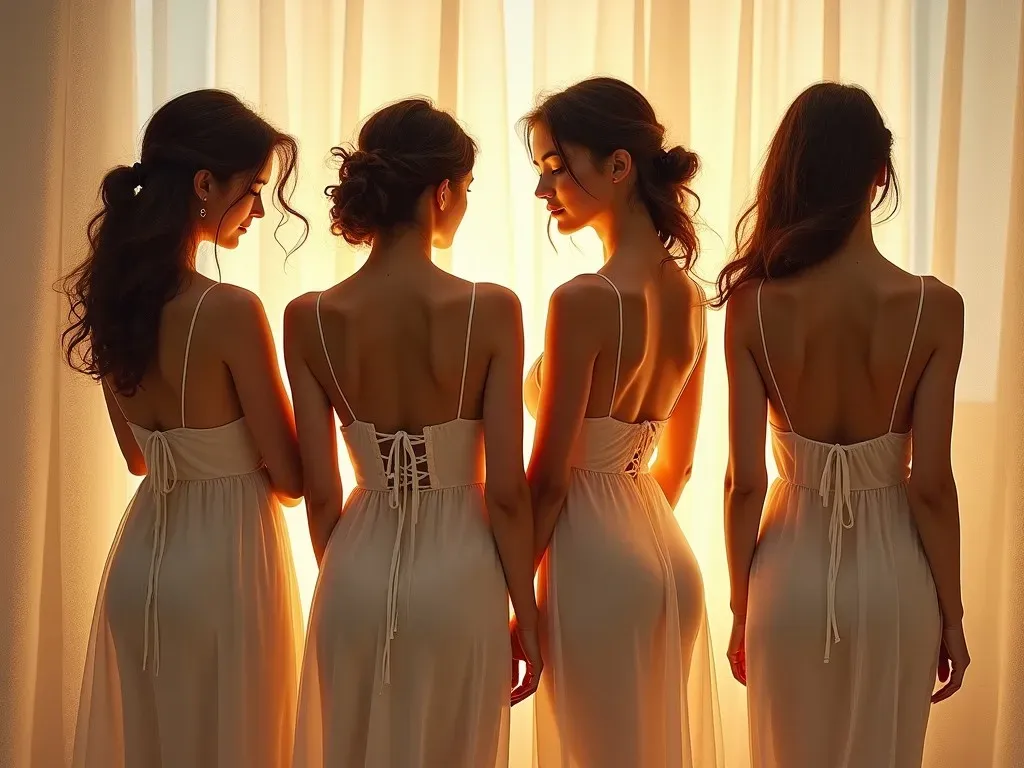Exploring paintings of women’s backs can lead the viewer into a world where the female form becomes a canvas of emotion and artistry. Unlike traditional portraits that often focus on the subject’s face, these artworks emphasize the mystery and allure inherent in the image of the back, capturing both vulnerability and strength. This unique perspective in art has fascinated countless artists and admirers alike, revealing a depth of character that transcends mere representation.
Artists throughout history have used the motif of a woman’s back to convey complex messages about identity, femininity, and communication. In these pieces, we often see a woman whose gaze is deliberately directed away from the viewer, inviting contemplation and introspection rather than confrontation. This can symbolize the dichotomy of presence and absence—the idea of a narrative that unfolds beyond the frame.
Understanding the Symbolism Behind the Subject
The representation of a woman from the back is heavily loaded with symbolism. It frequently embodies themes of introspection, privacy, and sometimes, seduction. For artists, the back can be a gateway into expressing a multifaceted portrayal of femininity that goes beyond conventional standards.
Table 1: Common Themes in Paintings of Women’s Backs
| Theme | Description |
|---|---|
| Introspection | Reflects a moment of thought or contemplation. |
| Vulnerability | Highlights the softness and strength of femininity. |
| Sensuality | Evokes physical beauty and allure without full exposure. |
| Independence | Suggests freedom and the individuality of women. |
| Mystery | Cultivates a sense of curiosity for the unseen. |
Iconic Works Featuring Women’s Backs
Several notable artworks capture the essence of women’s backs, making them significant in art history. Here are a few exemplary pieces that highlight this motif:
-
"Venus of Urbino" by Titian (1534)
While the painting depicts Venus in a frontal view, the powerful presence and curve of her back emphasize femininity and the gaze of desire. -
"Olympia" by Édouard Manet (1863)
Manet’s rendering of Olympia features the model reclining with one hand on her hip, asserting her autonomy as she turns away with a challenging gaze. -
"Woman with a Pearl Necklace in a Landscape" by Jean-Baptiste-Siméon Chardin (1735)
This painting showcases the subject in a relaxed pose, revealing the elegant line of her back as she engages with nature. -
"The Bathers" by Paul Cézanne (1890s)
Within this series, the backs of women are presented in a serene context, allowing the viewer to appreciate their forms in relation to the surrounding environment.
The Artistic Techniques Employed
Artists employ various Techniques to capture women’s backs, utilizing light, color, and texture to evoke emotion. The use of soft brushstrokes often mimics the fluidity of the human body, while shading can reveal the contours and movement of the back, adding to the sense of depth.
- Light and Shadow: The interplay of light and shadow can emphasize certain physical characteristics, directing the viewer’s gaze to the curve of the spine or the fall of hair.
- Color Palette: Warm hues can evoke intimacy, whereas cooler tones might evoke a sense of detachment or solitude.
- Textural Elements: The addition of patterns and textures can communicate the environmental context, enhancing the narrative component of the piece.
Notable Contemporary Artists
The theme of women’s backs continues to inspire contemporary artists who innovate with traditional techniques and materials. Here are some modern creators making waves in this area:
-
Mickalene Thomas: Known for her rhinestone-laden works, she often depicts the complexities of Black femininity, utilizing the body to challenge historical depictions of women in art.
-
Ghada Amer: Amer’s approach involves stitching and weaving to create complex narratives surrounding gender and identity, often focusing on the female form from various perspectives.
-
Zhang Xiaogang: An artist who incorporates contemporary themes with traditional aesthetics, his paintings explore familial relationships and the notion of memory, often featuring women in striking poses that emphasize the back.
FAQ Section
Q1: Why are paintings of women’s backs so captivating?
A: These paintings often highlight themes of mystery, vulnerability, and sensuality, inviting viewers to engage with the subject on a deeper emotional level.
Q2: What are common techniques used in creating these paintings?
A: Artists typically use techniques like light and shadow, color palettes, and textures to enhance the visual appeal and convey the themes behind the artwork.
Q3: Are there particular periods in art history where this motif was more prevalent?
A: The depiction of women’s backs can be found in various art periods, notably during the Renaissance and Impressionism, with each era reflecting its societal attitudes towards femininity.
Q4: How can one find modern interpretations of this theme?
A: Exploring contemporary art galleries or online art platforms like Saatchi Art can reveal a variety of modern interpretations focusing on women’s backs.
Conclusion
Paintings of women’s backs not only provoke curiosity and appreciation but also provide a nuanced lens through which to explore femininity and identity. From the heights of classical mastery to the contemporary discourse on gender, these works offer a timeless commentary on the human experience, inviting viewers to reflect on the unseen narratives that lie just beyond the frame. The rich symbolism and emotional depth presented in these artworks ensure their place in the artistic conversation, continuing to inspire both artists and audiences today.
